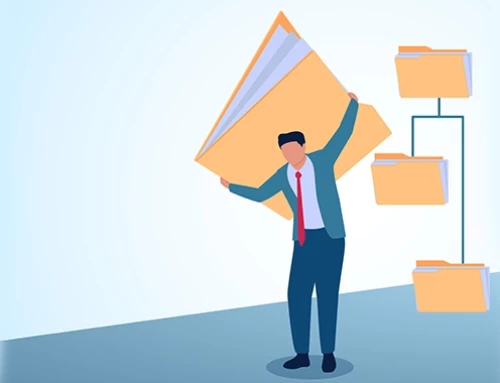Contents
Masterful Time Management for Lawyers: 10 Strategies
Effective time management for lawyers is crucial since they work with many cases, deadlines, and client contacts. Inefficient organization results in lost opportunities, added stress, and reduced efficiency. Using disciplined time management tools assist lawyers in prioritizing tasks, minimizing distractions, and enhancing productivity. Effective lawyer time management practices result in improved client service and work-life balance. This guide covers time management for lawyers with ten effective strategies for maximizing daily workflows.
Use Time Blocking and Prioritization Methods
Effective time management for lawyers ensures that attorneys can allocate their time efficiently to meet deadlines, serve clients, and handle legal research. Without a structured system, time is wasted on unorganized tasks, leading to stress and decreased productivity. Legal professionals can focus on high-impact activities and reduce inefficiencies by implementing lawyer time management techniques such as time blocking and prioritization methods. Time management strategies like these enhance efficiency and ensure legal work is completed without last-minute pressure.
I. The Eisenhower Matrix for Task Management
The Eisenhower Matrix is a structured method for prioritizing legal tasks based on urgency and importance. Attorneys categorize their workload into four quadrants: urgent and important, important but not urgent, urgent but not necessary, and neither urgent nor essential. This classification system ensures that critical case matters are handled immediately while long-term objectives are scheduled appropriately. Using this matrix as part of time management for lawyers helps attorneys focus on substantial legal work while delegating or eliminating non-essential tasks.
II. Time Blocking for Focused Legal Work
Time blocking is a lawyer time management technique where specific periods are dedicated to individual tasks, preventing distractions and interruptions. Attorneys allocate blocks of time for client consultations, research, drafting, and courtroom preparation. By following a structured schedule, attorneys reduce inefficiencies and maintain control over their workload. This approach, a key element of time management strategies, allows lawyers to remain focused and complete tasks within designated timeframes.
III. Managing Urgent vs. Important Tasks
Attorneys often find themselves handling urgent tasks while neglecting critical long-term objectives. A structured approach to distinguishing between urgent and vital responsibilities ensures that deadlines are met while essential legal planning is not ignored. By incorporating time management for lawyers, attorneys can manage client demands efficiently without compromising on necessary case preparations. Prioritizing tasks through lawyer time management ensures immediate and future legal work receives the required attention.

Master Delegation and Outsourcing
A critical aspect of time management for lawyers is knowing when to delegate tasks to legal assistants, paralegals, or external service providers. Attorneys often struggle with workload management because they try to handle all aspects of their practice independently. Delegation and outsourcing allow legal professionals to focus on high-value legal work while managing administrative and routine tasks efficiently. Proper lawyer time management through structured delegation increases productivity and improves legal service delivery.
I. Assigning Tasks to Legal Assistants and Paralegals
Delegating research, document preparation, and client follow-ups to legal assistants and paralegals is key to effective time management strategies. By assigning repetitive tasks to trained professionals, attorneys can concentrate on courtroom representation, case strategy, and negotiations. Time management for lawyers improves when legal support staff handle administrative responsibilities, allowing attorneys to focus on billable work.
II. Outsourcing Administrative and Repetitive Work
Many routine administrative functions, including appointment scheduling, billing, and transcription, can be outsourced to specialized professionals or automated systems. Outsourcing reduces unnecessary workload and enhances efficiency. By utilizing this approach, attorneys improve lawyer time management, freeing time for critical client matters. Time management strategies incorporating outsourcing lead to better workflow organization and reduced stress.
III. Setting Clear Expectations and Follow-Ups
Delegation is only effective when tasks are assigned with clear expectations and deadlines. Attorneys must communicate precise instructions to legal staff and ensure work is completed according to standards. Regular follow-ups improve accountability and prevent errors. Effective time management for lawyers requires structured delegation, allowing attorneys to oversee progress while focusing on strategic legal work.
Optimize Email and Communication Workflows
Email and communication management are vital components of time management for lawyers. A high volume of emails, phone calls, and client inquiries can lead to distractions and inefficiencies. Establishing structured communication workflows ensures that attorneys respond to urgent matters while avoiding unnecessary time spent on excessive emails. Proper lawyer time management techniques prevent communication overload and improve workflow organization.
I. The OHIO (Only Handle It Once) Principle
The OHIO principle encourages attorneys to address emails and tasks as soon as they are received, eliminating the need for repeated review. This time management strategy prevents inbox overload and ensures that essential messages are not overlooked. Implementing lawyer time management techniques like OHIO helps attorneys maintain organized communication without unnecessary delays.
II. Email Templates and Automation for Efficiency
Attorneys often send similar emails about case updates, appointment scheduling, and client inquiries. Using email templates and automation tools like RunSensible significantly enhances time management for lawyers by reducing the time spent composing repetitive messages. Automating responses improves lawyer time management by ensuring timely client communication while freeing time for substantive legal work.
III. Reducing Unnecessary Meetings and Calls
Excessive meetings and unstructured phone calls can disrupt workflow and decrease efficiency. To ensure productivity, attorneys should set clear agendas, time limits, and objectives for all meetings. By managing meetings effectively, attorneys enhance time management strategies and allocate more time to case preparation and litigation.
Cultivate Deep Work and Minimize Distractions
Legal professionals handle complex work that requires uninterrupted concentration. Effective time management for lawyers involves minimizing distractions and optimizing deep work sessions. Attorneys who eliminate interruptions and structure their time effectively complete high-value tasks more efficiently.
I. Setting Boundaries for Uninterrupted Work
Establishing office policies that limit unnecessary interruptions improves lawyer time management. Attorneys should schedule deep work sessions where non-urgent calls and messages are deferred. By implementing boundaries, attorneys increase efficiency and ensure important legal tasks receive the necessary focus.
II. Using Focus Techniques Like the Pomodoro Method
The Pomodoro technique involves working in focused intervals with scheduled breaks to maintain concentration and prevent mental fatigue. Applying this approach as part of time management strategies ensures attorneys complete case-related tasks without distractions. Using structured time intervals increases efficiency and enhances overall productivity.
III. Managing Notifications and Interruptions
Disabling non-essential notifications and checking emails at scheduled times improves time management for lawyers. Attorneys who control distractions effectively are more productive and complete legal work with greater accuracy. Structured communication policies contribute to better lawyer time management, allowing professionals to focus on legal priorities.
Implement a Robust Legal Document System
Managing legal documents efficiently is essential for time management for lawyers. Attorneys handle large volumes of case files, contracts, and court documents, and without an effective system, time is wasted searching for information. A structured lawyer time management approach to document organization ensures quick access, security, and streamlined workflows. Proper time management strategies for document handling enhance productivity and prevent administrative bottlenecks.
I. Organizing Case Files for Quick Access
A systematic filing system ensures that attorneys can locate case files without delay. Categorizing documents by case number, client name, or type prevents misplacement and enhances efficiency. Digital file organization using keyword tagging and metadata further improves time management for lawyers, ensuring that attorneys spend less time retrieving essential legal materials.
II. Using Cloud Storage for Security and Collaboration
Cloud-based document management platforms such as RunSensible allow attorneys to store, access, and share case files securely from any location. These systems integrate seamlessly into lawyer time management, preventing delays caused by missing or inaccessible files. Time management strategies incorporating cloud solutions improve legal team collaboration and ensure compliance with data security standards.
III. Automating Document Generation and Retrieval
Document automation tools enable attorneys to generate contracts, pleadings, and agreements using pre-filled templates. These technologies reduce manual drafting time and improve workflow efficiency. By integrating automation into time management for lawyers, attorneys can focus on substantive legal work while minimizing administrative burdens.
Streamline Client Communication and Updates
Client communication is a significant part of legal practice, but it can become time-consuming without structured lawyer time management. Managing client interactions efficiently ensures that attorneys provide timely updates while maintaining productivity. Implementing time management strategies for communication prevents repetitive client inquiries and improves client satisfaction.
I. Setting Client Expectations Early
Establishing clear communication policies at the beginning of a client relationship reduces unnecessary follow-ups. Clients should know response times, preferred communication methods, and case update schedules. By structuring interactions, attorneys enhance time management for lawyers and ensure productive communication.
II. Using Client Portals for Self-Service Updates
Secure client portals allow clients to access case progress, legal documents, and scheduled hearings without requiring direct attorney intervention. These tools streamline communication and prevent excessive emails and calls. Incorporating client portals into lawyer time management allows attorneys to manage client expectations efficiently while maintaining availability for urgent legal matters.
III. Automating Appointment Scheduling and Reminders
Automated scheduling tools reduce the administrative workload by allowing clients to book meetings at designated times. Email and SMS reminders prevent missed appointments and ensure that attorneys and clients remain on schedule. These systems optimize time management strategies by improving efficiency and reducing manual coordination.
Conduct Efficient and Productive Meetings
Meetings are essential in legal practice, but unstructured discussions consume valuable time. Proper time management for lawyers requires attorneys to conduct meetings efficiently, ensuring that discussions remain focused and productive. Implementing structured lawyer time management techniques in meetings minimizes disruptions and enhances workflow efficiency.
I. Setting a Clear Agenda and Goals
Every meeting should have a predefined agenda outlining discussion points, objectives, and expected outcomes. Providing this structure ensures that meetings stay on track and avoid unnecessary diversions. Integrating clear agendas into time management strategies reduces time wastage and improves decision-making.
II. Limiting Meeting Duration and Participants
Meetings should be time-bound, ensuring that discussions remain concise and relevant. Limiting participants to only those necessary for the discussion improves time management for lawyers by preventing unnecessary involvement. Setting a fixed duration for meetings enhances efficiency and ensures attorneys have sufficient time for casework.
III. Using Asynchronous Communication Alternatives
Not all discussions require real-time meetings. Attorneys can utilize asynchronous communication methods, such as written updates, shared documents, or recorded briefings, to convey information without disrupting work schedules. These alternatives contribute to better lawyer time management, ensuring that attorneys can focus on case preparation and client representation.
Utilize Voice-to-Text and Speech Recognition Tools
Speech-to-text technology significantly improves time management for lawyers by expediting document creation, transcriptions, and communication. Attorneys often spend considerable time typing notes, drafting documents, and recording case details manually. Implementing voice recognition tools as part of lawyer time management accelerates these tasks, increasing efficiency.
I. Using Dictation Software for Drafting Legal Documents
Dictation software allows attorneys to draft contracts, legal arguments, and case summaries quickly by speaking instead of typing. These tools enhance time management strategies by converting spoken words into text, reducing the time spent on manual documentation.
II. Transcribing Notes and Case Details Quickly
Automated transcription tools convert recorded conversations, witness statements, and case discussions into written text, preventing delays in documentation. Attorneys utilizing this technology optimize time management for lawyers, ensuring that key case details are documented without spending hours on manual transcription.
III. Enhancing Productivity with AI-Driven Voice Assistants
AI-powered voice assistants help attorneys schedule meetings, set reminders, and conduct research through voice commands. These technologies support lawyer time management by handling routine administrative tasks, allowing attorneys to focus on strategic legal work. By integrating AI-driven tools, attorneys improve their efficiency and workflow management.
Apply the 80/20 Rule to Maximize Results
The Pareto Principle, or the 80/20 rule, is an essential concept in time management for lawyers. It suggests that 20% of efforts generate 80% of outcomes. Attorneys who focus on high-impact activities optimize their efficiency and enhance overall productivity. Implementing lawyer time management techniques based on this principle allows legal professionals to prioritize work that yields the most significant results.
I. Identifying High-Impact Tasks in Legal Practice
Attorneys should evaluate their workload to determine which tasks contribute most to case success and firm profitability. Strategic case planning, client representation, and litigation yield substantial benefits. By emphasizing these high-value activities, attorneys improve their time management strategies and maximize productivity.
II. Eliminating Low-Value Activities
Many administrative and non-essential tasks consume valuable time without significantly contributing to legal success. Attorneys should assess whether duties such as excessive documentation, lengthy email exchanges, or redundant meetings can be minimized or delegated. Removing unnecessary activities enhances time management for lawyers and allows attorneys to focus on legal priorities.
III. Focusing on Revenue-Generating Work
Billable legal work, case strategy development, and client advocacy are the primary revenue-generating activities for attorneys. Allocating more time to these critical functions ensures financial stability and professional growth. A well-structured lawyer time management approach ensures that attorneys invest their time wisely, focusing on tasks that provide the most value.
Take Control of Your Time for Maximum Success
Effective time management strategies are essential for attorneys juggling multiple cases, deadlines, and client communications. By implementing structured techniques like time blocking, delegation, and automation, lawyers can reduce inefficiencies and focus on high-value tasks. A well-organized workflow leads to better case outcomes, improved client satisfaction, and reduced stress. Prioritizing productivity ensures legal professionals meet their obligations while maintaining a sustainable work-life balance.
Mastering lawyer time management is not just about working harder, it is about working smarter. Attorneys who embrace efficient time management for lawyers gain a competitive edge by optimizing their daily routines. These ten strategies allow legal professionals to streamline their operations, minimize distractions, and maximize productivity. A disciplined approach to time management will enable attorneys to succeed tremendously while maintaining control over their workload.
Take Control of Your Legal Practice with RunSensible
Effective time management for lawyers starts with the right tools. RunSensible is an all-in-one legal practice management solution designed to streamline case management, automate administrative tasks, and enhance client communication. With features like intelligent scheduling, document automation, secure cloud storage, and client portals, attorneys can save time and focus on what matters most, delivering exceptional legal services.
Improve lawyer time management with seamless integrations, AI-powered workflows, and built-in automation that eliminates repetitive tasks. Whether you need efficient billing, case tracking, or automated client intake, RunSensible helps you stay organized and productive. Use advanced time management strategies and optimize your legal practice today with RunSensible’s comprehensive platform.
FAQs
1. What is the most effective time management strategy for lawyers?
The most effective time management strategy depends on individual work habits, but many attorneys benefit from time blocking, the Eisenhower Matrix, and delegation. These techniques help prioritize tasks, reduce distractions, and optimize productivity.
2. How can lawyers reduce the time spent on administrative tasks?
Lawyers can minimize administrative workload by using automation tools, delegating tasks to legal assistants, and implementing efficient document management systems. Streamlining workflows with technology helps attorneys focus on legal work rather than routine administrative duties.
3. How does time management improve client relationships?
Efficient time management allows lawyers to respond to clients promptly, meet deadlines consistently, and provide better legal services. When attorneys manage their time well, they can communicate effectively, set clear expectations, and reduce delays, leading to higher client satisfaction.
4. How can attorneys avoid burnout while managing heavy workloads?
Attorneys can prevent burnout by setting clear work boundaries, prioritizing essential tasks, and taking regular breaks. Using structured time management techniques, such as deep work sessions and delegation, helps balance workload demands while maintaining well-being.
References
- https://www.americanbar.org/groups/law_practice/resources/law-practice-today/2024/september-2024/top-ten-time-management-strategies-for-attorneys/
- https://lifehackmethod.com/blog/time-management-for-lawyers/
- https://www.araglegal.com/attorneys/learning-center/topics/building-your-practice/eleven-tips-for-attorneys-on-mastering-time-management
- https://www.bill4time.com/blog/10-tips-time-management-for-lawyers/
- https://www.barbri.com/resources/mastering-time-management-for-lawyers
Disclaimer: The content provided on this blog is for informational purposes only and does not constitute legal, financial, or professional advice.







